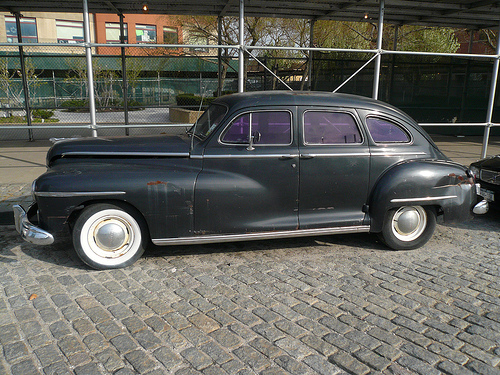
Vehicles 100 years and old typically fall into the antique class and this includes the "Brass Era car" that are defined by the Horseless Carriage Club of America (HCCA) as "any pioneer gas, steam and electric engine vehicle built or made just before January 1, 1916. "
The "classic" expression is usually applied loosely by owners to any car.
Legally, most states have time-based rules for your definition associated with "historic" or "classic" regarding purposes such as vintage vehicle registration. For instance, Maryland defines historic vehicles as 20 calendar many years old or older and they "must not need already been substantially altered, remodeled or even remanufactured from the producers original design"[3] while West Virginia describes motor vehicles produced in least 25 years previous to the particular current year as entitled for "classic" car license plates.
Despite this, at many American classic car shows, automobiles typically range from the 1920s to the 1970s. Recently, many 1980s and even early 1990s cars are regarded being "classic automobiles". Examples of cars at this kind of shows include the Chevy Bel-Air, Ford Model T, Dodge Charger, Ford Deuce Coupe, and 1949 Kia. Meanwhile, the Concours d'Elegance car shows feature renowned automobiles like the Cadillac V16 or pre-1940 Rolls-Royce models. There are also conditions as "modern customs", "exotics", or "collectibles" that cover cars for example the AMC Gremlin or Ford Pinto.
There are dissimilarities in the actual identification of a "classic car". Division by separate eras include: horseless carriages (19th-century experimental automobiles like the Daimler Motor Carriage), antique cars (brass era cars like the Ford Model T), and classic cars (typically 1930s cars for example the Cord 812). Some also consist of muscle cars, with the particular 1974 model year as the cutoff.
The Traditional Car Club of America describes a CCCA Traditional as a "fine" or "distinctive" automobile, either American or foreign built, produced between 1915 and 1948.
The CCCA is dedicated to the preservation and pleasure of select cars that "are distinguished by their respective fine design, high engineering standards and excellent workmanship. "Other differentiating factors - including engine displacement, custom coachwork, and luxury accessories such as power brakes, power clutch, and "one-shot" or even computerized lubrication systems - help determine whether the car is considered a CCCA Classic.The cars on their own list "represent the peak of engineering, styling plus design for era. inch
Any CCCA associate may petition for the vehicle to join checklist. Such applications are thoroughly scrutinized, but rarely is really a new vehicle type accepted. Moreover, no commercial automobiles such as hearses, ambulances, or race cars are usually accepted being a Full Traditional.
The CCCA maintains this particular definition of "classic car" and uses phrases such as CCCA Classic or the trademarked Full Classic. The particular CCCA has estimated that 1, 366, 843 "American Classics" were built
There is absolutely no fixed definition of the classic car. Two taxation issues do impact nevertheless, leading to some men and women using them as cut-off dates. All cars built before January 1, 1976, are exempted from having to pay the total annual road taxes vehicle excise duty. This really is then entered on the licence disc displayed on the windscreen as "historic vehicle" (if a vehicle built before this day has been first authorized in 1975 or afterwards, then its build day would have to be verified by a recognised body such as British Engine Heritage Foundation to declare tax-free status). HM Revenue and Customs define a classic car for organization taxation purposes as getting over 15 years aged and having a value within excess of £15, 000.[15] Additionally, well-known acclaim through a sizable number of classic car magazines performs a crucial role in whether or not a car comes in order to be viewed as a classic.
It is all very subjective and a matter of opinion. The elimination associated with depreciation is a cause for buying a traditional car; this is a major price of owning a modern car.
Picking 'future classics' that are present 'bangers' is a activity of folks into classic vehicles in the UK. Successfully picking and buying one can cause a profit for the customer as well as supplying transport. An immaculate properly cared for prestige design with high running expenses that impacts its value, but is not however old enough to end up being regarded as a vintage, could be a good purchase, for example
Related Images with few dings, this 60 year old car still looked to be in good shape
Looking for classic cars or vintage cars for sale in your area? Visit

Good Looking Mercedes Benz Classic Car HD Wallpaper

cool vintage car picture.jpg

Vintage Muscle Cars 14 Cool Wallpaper Hivewallpaper.com

Tidak ada komentar:
Posting Komentar